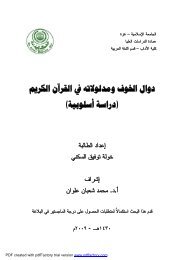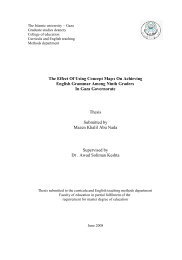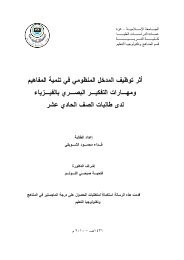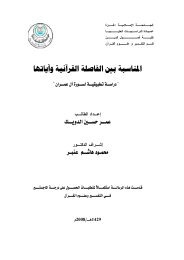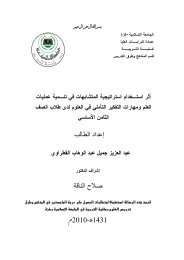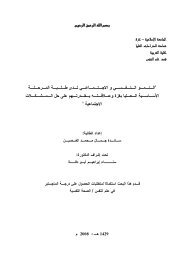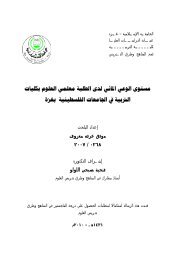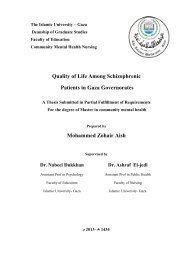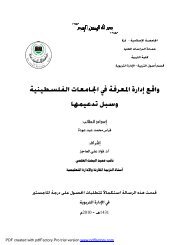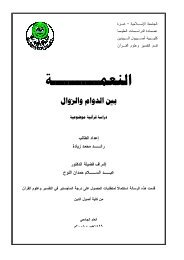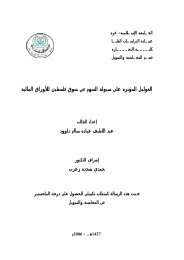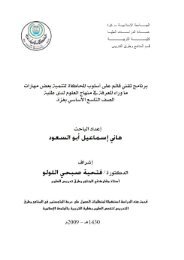developing a model for integrating safety, quality and productivity in ...
developing a model for integrating safety, quality and productivity in ...
developing a model for integrating safety, quality and productivity in ...
Create successful ePaper yourself
Turn your PDF publications into a flip-book with our unique Google optimized e-Paper software.
organizational programs aim<strong>in</strong>g at maximiz<strong>in</strong>g satisfaction level of customer throughthe full commitment to cont<strong>in</strong>uous <strong>quality</strong> improvement (Dessler, 2002).Whiletraditional <strong>quality</strong> management is concerned <strong>in</strong> end product, total <strong>quality</strong> managementfocuses on manag<strong>in</strong>g the processes that produce the results (Cited by Adams <strong>in</strong>Kaliher, 2003). Love et al (2000) said that the TQM philosophy stresses a systematic,<strong>in</strong>tegrated, consistent, organization-wide perspective <strong>in</strong>volv<strong>in</strong>g all employees where it– TQM – focuses primarily on total satisfaction <strong>for</strong> both <strong>in</strong>ternal <strong>and</strong> externalcustomers, with<strong>in</strong> a management environment that seeks cont<strong>in</strong>uous improvement ofall systems <strong>and</strong> processes. It should, however, be noted that the tools associated withTQM can be as readily applied <strong>in</strong> a stable environment as <strong>in</strong> the manufactur<strong>in</strong>g sectorbut <strong>in</strong> construction, where customers’ requirements are <strong>in</strong>creas<strong>in</strong>gly complex <strong>and</strong>expectations uncerta<strong>in</strong>, the application of such tools can become difficult (Pheng <strong>and</strong>Ke-Wei, 1996).TQM was adopted to meet requirements of the various <strong>in</strong>dustries. Thus, features ofTQM will face little differences while keep<strong>in</strong>g the ma<strong>in</strong> concept stable. In theirresearch, there are six key features of TQM as follows (Shammas-Toma et al, 1998):i. Customer/supplier relationships.ii.Prevention rather than detection of defects.iii. Leadership.iv.Change <strong>in</strong> organizational culture.v. Emphasis on team work.vi.The use of statistical tools.Relatively, other scholars have found or seen similar features of TQM. The mostcommon elements agreed upon by scholars <strong>in</strong> the field are top managementcommitment, customer focus, <strong>quality</strong> data <strong>and</strong> <strong>in</strong><strong>for</strong>mation, employee <strong>in</strong>volvement,tra<strong>in</strong><strong>in</strong>g <strong>and</strong> cont<strong>in</strong>uous improvement (Cited by Al-Sulimani <strong>and</strong> Sharad <strong>in</strong> Curry <strong>and</strong>Kadasah, 2002).Salaheld<strong>in</strong> (2003) <strong>in</strong> his research set guidel<strong>in</strong>es that might be of importance topromote TQM strategy implementation by Egyptian manufacturers. The ma<strong>in</strong>managerial implications <strong>in</strong> his research are:19




